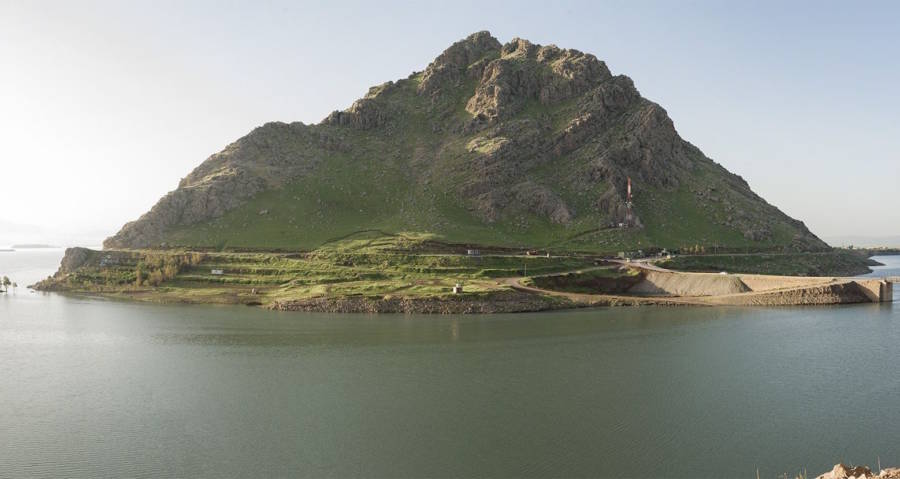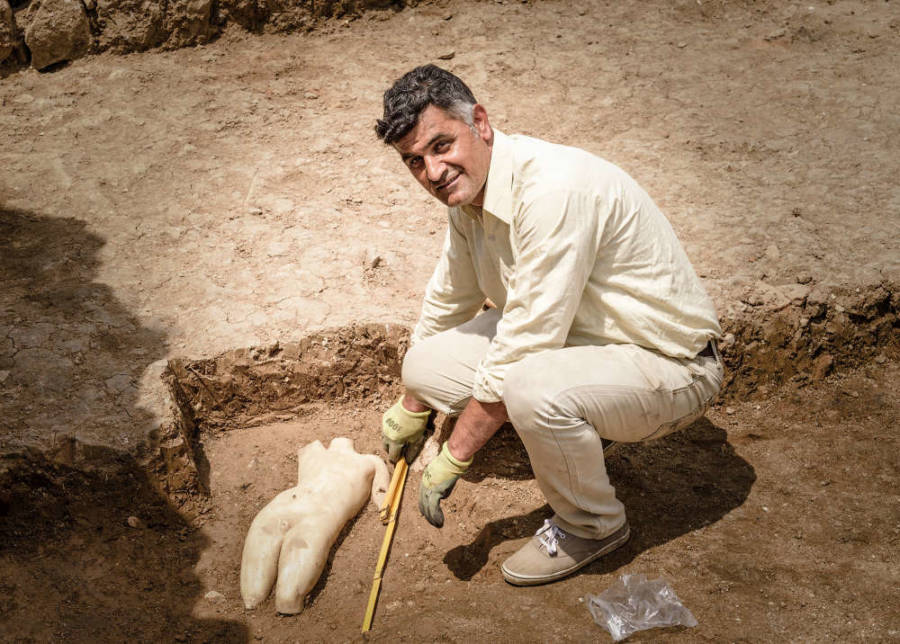Alexander and his army first marched through the city in 331 BC while chasing Darius III, the king of Persia, back to Iran.

The British MuseumQalatga Darband.
When Iraqi archeologists were examining spy plane
photographs of the country’s landscape, they were shocked to find
evidence of an ancient city.
Fox News reports
that researchers at the Iraq Emergency Heritage Management Training
Programme first discovered this ancient city while examining
declassified satellite photos. The Iraq Emergency Heritage Management
Training Programme is a joint organization that Iraqi archeologists and
the British Museum set up to mitigate ISIS damage to heritage sites and
artifacts in Iraq.The photos they analyzed were ones taken of Iraq by United States spy
satellites in the 1960s, during the cold war, and were only
declassified in the 1990s.
The researchers were analyzing these photographs in order to get a
greater understanding of the damage ISIS has wreaked on archeological
sites in the intervening years since the photos were taken when they
spotted what appeared to be ancient limestone blocks at a previously
unknown site.
After these images were sent back to the British Museum for analysis,
the ancient city was identified as Qalatga Darband. The team then sent a
drone to the location they had discovered to conduct a more thorough
survey of the location.After determining that further buildings were buried at the site, the team began excavations.
They discovered that Qalatga Darband, at the western edge of the
Zagros Mountains, on part of a historic route from ancient Mesopotamia
to Iran.
Dr. John MacGinnis, the archaeologist leading the program, said,
“It’s early days, but we think it would have been a bustling city on a
road from Iraq to Iran. You can imagine people supplying wine to
soldiers passing through.”While the city was later founded by the Seleucid Empire that arose
out of Alexander The Great’s Macedonian Empire, it was likely first
noticed by the Macedonians when Alexander and his army marched past it
in 331 BC while chasing Darius III, the king of Persia, back to Iran.
“A systematic collection of surface ceramics has been carried out,
analysis of which has for the first time established that the site can
be dated to the first and second centuries BC,” explained the British
Museum, in a press release.
Archeological excavation of the Qalatga Darband site has discovered
that the city had many Hellenistic influences from this Macedonian
empire. They discovered statues of Greco-Roman gods located in the city,
and what they believe may be the remains of a Hellenistic temple.

The British MuseumArcheologist finding Greco-Roman god statue in Qalatga Darband.
The British Museum said, “The discovery of a city established in the
wake of the conquests of Alexander the Great is already yielding
evidence for the fundamental changes wrought by the advent of
Hellenism.”
Hopefully, these discoveries will shed greater light on the influence
of the Macedonian Empire, and on the legacy of Alexander the Great.



No comments:
Post a Comment